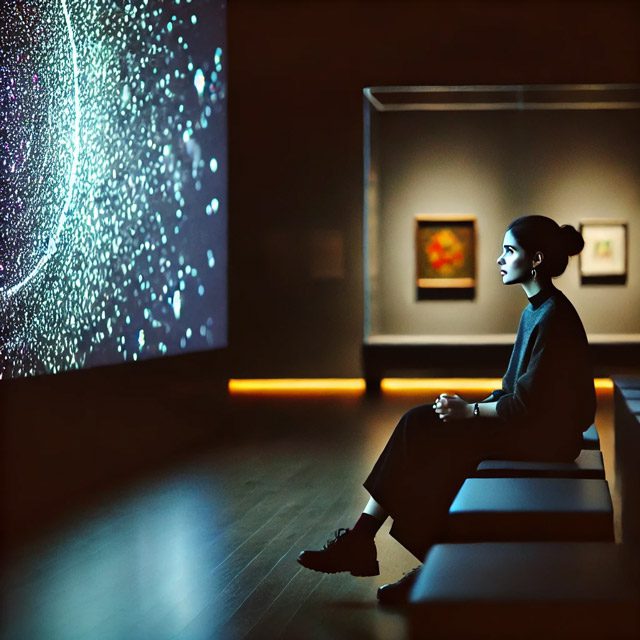
Every museum has one. You know the one: a dim, curtained-off corner, pulsating with the vague light of some art video. You can see it there, lurking like a half-acknowledged secret, a forgotten experiment from some curatorial meeting no one wants to admit went wrong.
Let’s be clear: this room exists for one reason only. It’s a catch-all. A dumping ground for those “edgy” video installations nobody knows what to do with but can’t bear to exclude. Maybe the artist has a name, maybe they don’t, but someone in the art world once nodded and said, “That’s interesting.” And now here we are, with a whole room dedicated to a looping 30-minute montage of flickering lights, close-ups of wrinkled hands, and maybe a teapot breaking in slow motion.
You’ve probably seen the pattern. Museums receive these pieces under some vague notion of “interactive media” or “the contemporary spirit.” But no one really knows how to fit them in alongside the usual stars—the Rembrandts, the Monets, the Old Masters holding court with their oils and carefully rendered gazes. The video installation is the awkward cousin who insists on tagging along but doesn’t quite fit in with the main exhibit. It’s shoved into a space all its own, labeled “experimental” to hint that this isn’t your typical museum fare. It’s “special.” Or at least, someone decided it had to be.
And here’s the real kicker: the dark room isn’t just in the back because it’s “special.” No, it’s strategically placed as far from the main action as possible. Right by the bathrooms? Perfect. Next to the janitor’s closet? Even better. Museum curators know what they’re doing. They understand that this installation, with its strange mix of ambient noise and artfully blurred footage, is precisely the sort of thing most visitors want to avoid. So, they tuck it away, letting only the brave and the curious (or the lost) wander in.
Now, let’s talk about the ambiance inside. Once you enter, the door shuts, and you’re alone. It’s like the room exists in a different universe—a limbo for lost time and, often, lost patience. You’ll stand there, squinting at abstract visuals, wondering if anyone else has ever watched the whole thing. (Spoiler: probably not.) And just when you think it’s over, the video loops, and you’re left with an existential choice: leave and admit defeat, or stay and possibly become the first human to fully absorb this enigmatic “masterpiece.”
You’ve gotta give credit to whoever thought this up. A whole room for a film that’s intentionally disorienting, where there’s no storyline, no clear imagery, just fragments of something you can’t quite grasp. It’s like the art version of a mystery box—a room that dares you to enter, yet somehow doesn’t care if you leave after 10 seconds. And perhaps, that’s the point: the dark room isn’t there for you to enjoy. It’s there to remind you that art can be perplexing, even uncomfortable. It’s a dare, a trap, and a ghostly whisper, all in one.
So next time you see it, remember: that dark room wasn’t designed with you in mind. It’s for the artists, the curators, and maybe a handful of die-hard video art fans who get what’s going on. The rest of us? We’re just passing through, hoping to make it back to daylight.




